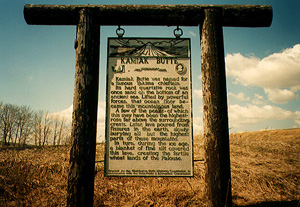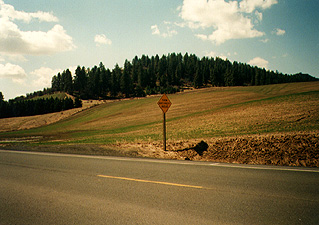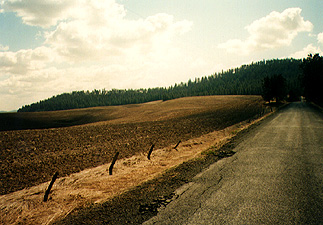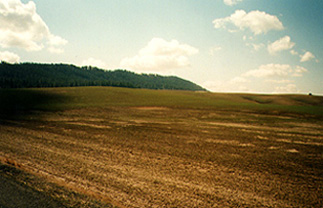



PULLMAN AREA PARKS

|
"Kamiak Butte was named for a famous Yakima chieftan. It's hard quartzite rock was once sand on the bottom of an ancient sea. Lifted by powerful forces, that ocean floor became this mountainous land. A few of the peaks - of which this may have been the hightest - rose far above the surrounding crests. Later, lava poured from fissures in the earth, slowly burying all but the highest parts of these mountains. In turn, during the ice age, a blanket of fine silt covered this lava, creating the fertile wheat lands of the Palouse." |
 |
"Parks are usually created in areas that the culture deems special in some way. In the past this has meant landscapes with 'unique' features, such as geysers or mountains.... Since the 1960's, parks have been created to preserve 'representative' features of the landscape. But nowhere are nature parks concerned with vernacular landscapes, with the natural history of the worked lands that most of us live on" (Wilson, The Culture of Nature). |
 |
"Parks are now expected to preserve culturally significant landscapes and important ecosystems" (Wilson, The Culture of Nature). |
 |
On a larger scale, Kamiak Butte embodies the same experiences apparent in the design of Sunnyside Park. Borders and boundaries clearly define the experiences contained within certain areas of nature. |


Other American Studies Pages:
| American Studies Home Page | Cultures and Environments Page |
 Please report problems to the following address:
Please report problems to the following address: